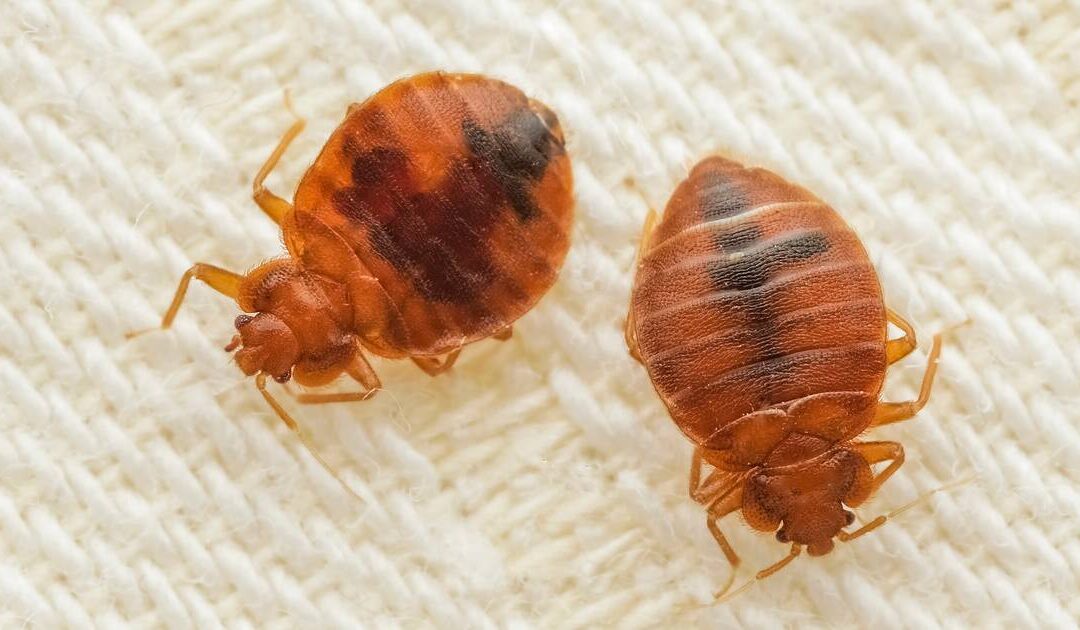Integrated pest management is an holistic approach to pest control that combines a variety of strategies to manage pest populations. The goal is to provide effective pest control while minimizing any potential risks to human health or the environment.
When it comes to bed bugs integrated pest management (IPM) is particularly important. These pests are small, elusive, and highly resilient. To effectively control bed bug populations it is often necessary to wage our campaign on a variety of fronts. These include education, prevention, monitoring, and a selection of chemical and non-chemical control methods.
Prevention
Prevention is the first line of defense in the battle against bed bugs. The aim is to prevent bed bugs from entering a property and establishing a long-term presence there.
Preventative strategies include:
- Education – Knowing how to identify bed bugs is a crucial part of pest management. Learning how to recognize signs of bed bug activity such as blood stains on linen and fecal stains on bedding and mattresses.
- Inspection – Regular inspections of bed bug hot spots can help to identify the early signs of a bed bug infestation. Regularly inspect sleeping areas, furniture, clothing and luggage.
- Seal Entry Points – Bed bugs often enter buildings through cracks and crevices. Sealing these potential entry points can help to prevent infestations.
Monitoring
Monitoring is essential for the early detection of bed bug infestations. It is also important in evaluating the effectiveness of any ongoing control measures.
Key monitoring techniques include:
- Visual Inspections – Regular monitoring of sleeping areas, furniture, and other potential bed bug hiding spots is crucial. Mattresses, box springs, and upholstered furniture are prime areas of concern.
- Interceptor Traps – Bed bug traps are placed under beds and other furnishings to trap bed bugs as they hunt their prey. Interceptor traps can help detect low-level infestations that may not be obvious during visual inspections.
- Bed Bug Detection Dogs – Specially trained dogs can detect bed bugs through their keen sense of smell. Bed bug inspection dogs are particularly useful in monitoring large or complex properties such as hotels or apartment buildings.
Treating the Infestation Directly
Integrated pest management must also include treatment methods that can be utilized to eliminate the pests in question. When it comes to bed bugs there are a variety of treatment methods that can be employed. These include traditional chemical pesticides as well as non-chemical techniques such as extreme heat and extreme cold.
Some of the more common treatments used to eliminate bed bugs include:
- Insecticides – Various insecticides can be effectively used to eradicate bed bug infestations. As with all chemical treatments these should only be applied by trained professionals.
- Aerosols and Fumigants – Aerosol sprays and fumigants are sometimes used to treat hard to reach areas. These methods require professional application to ensure proper coverage and to maintain safety.
- Heat Treatment – Bed bugs are sensitive to extreme temperatures. Heat treatments involve raising the ambient temperature of infested areas to around 120F for several hours. This is lethal to bed bugs and their eggs. This method can be applied to entire rooms or specific items.
- Cold Treatment – Just as bed bugs are susceptible to extreme heat so they are vulnerable to extreme cold. Freezing temperatures can be used to kill bed bugs and their eggs. This treatment can be used to eliminate bed bugs in specific areas of a building or to treat personal items that have become infested.
- Steam – High temperature steam can effectively kill bed bugs and their eggs on contact. Steamers are typically used to treat mattresses, furnishings, and other infested items that can’t be treated with chemicals.
The Importance of IPM for Bed Bugs
Integrated pest management for bed bugs is a comprehensive approach that combines prevention and education with a variety of direct treatment methods. By implementing these strategies we can effectively manage bed bug infestations, reduce their impact on our health and comfort, and minimize environmental risks.
The success of any treatment plan depends on the ongoing collaboration between homeowners, landlords, and pest control professionals. Through vigilant control measures we can address the challenge of bed bug infestations effectively and safely.
Published by Scott Palatnik
We are Bedbug Inspection & Elimination specialists.
From Manhattan to Montauk and all points in between.
Got questions?
We got answers.
Give us a call @ 212-299-9186 or 516-619-6149

